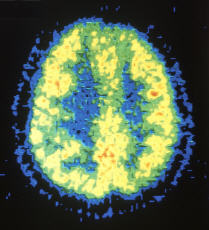 |
 |
 |
||
    |
||||
|
||||
|
Other Health Topics:
Nuclear Scans
Also called: Radioisotope scans, Radionuclide scans
Nuclear scanning uses radioactive substances to see structures and functions inside your body. Nuclear scans involve a special camera that detects energy coming from the radioactive substance, called a tracer. Before the test, you receive the tracer, often by an injection. Although tracers are radioactive, the dosage is small. During most nuclear scanning tests, you lie still on a scanning table while the camera makes images. Most scans take 20 to 45 minutes. Nuclear scans can help doctors diagnose many conditions, including cancers, injuries and infections. They can also show how organs like your heart and lungs are working.
Start Here
|
| Home | Health Topics | Drugs & Supplements | Encyclopedia | Dictionary | News | Directories | Other Resources | |
| Disclaimers | Copyright | Privacy | Accessibility | Quality Guidelines U.S. National Library of Medicine, 8600 Rockville Pike, Bethesda, MD 20894 National Institutes of Health | Department of Health & Human Services |
Date last updated: 04 February 2009 Topic last reviewed: 22 January 2009 |


